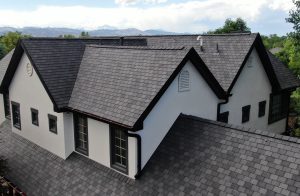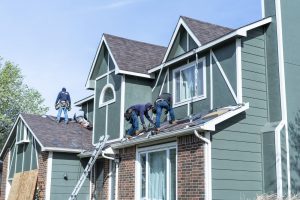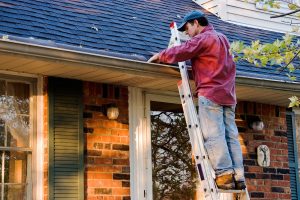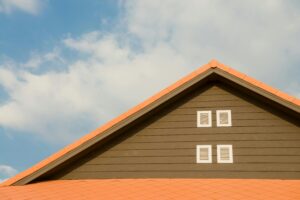Your roof is one of the most complex components of your home, silently standing guard against the elements and protecting your most valuable assets. But how much do you really know about it? Let’s dig into better understanding the 5 components of your Crownsville Maryland Roof. At Columbia Roofing, we believe that an informed homeowner is a empowered homeowner. That’s why we’ve put together this comprehensive guide to help you understand the ins and outs of your residential roof.
1. What are the Main Components of a Residential Roof?
While it might look like a simple surface, your roof is a complex system made up of several interconnected components, each playing a vital role:
- Roof Covering: This is the outermost layer you see, typically shingles, tiles, or metal panels. Its primary job is to shed water.
- Underlayment: Installed directly beneath the roof covering, this waterproof or water-resistant barrier provides an extra layer of protection against moisture penetration, especially during high winds or heavy rain.
- Decking (Sheathing): This is the structural base of your roof, usually made of plywood or OSB (oriented strand board) sheets, nailed to the rafters. It provides a surface to attach the underlayment and roof covering.
- Trusses/Rafters: These are the skeletal framework of your roof, forming the triangular structure that supports the decking and transfers the roof’s weight down to the exterior walls.
- Flashing: Thin pieces of metal (often aluminum or copper) installed in areas where the roof meets a vertical surface (like a chimney, wall, or skylight). Flashing prevents water from seeping into vulnerable areas.
- Drip Edge: A metal flashing installed along the edges of the roof to help water drip clear of the fascia and prevent it from running back under the shingles.
- Soffit: The exposed underside of your roof’s eaves (the part of the roof that overhangs the exterior walls). Soffits often have vents to facilitate attic ventilation.
- Fascia: The vertical board that runs along the edge of your roof, just below the roofline. It’s where your gutters are typically attached.
- Gutters and Downspouts: These are essential for diverting rainwater away from your home’s foundation, preventing water damage to your landscaping and basement.

2. How Long Does a Typical Roof Last?
The lifespan of your roof largely depends on the type of material used and proper maintenance. Here’s a general breakdown:
- Asphalt Shingles: The most common roofing material, asphalt shingles typically last 15-30 years. Their lifespan can vary depending on the quality of the shingles (3-tab vs. architectural), climate, and installation.
- Metal Roofing: Known for its durability, metal roofs can last anywhere from 40-70 years, and sometimes even longer with proper care. They are resistant to fire, rot, and insects.
- Wood Shakes/Shingles: Offering a natural and rustic look, wood roofs generally last 20-40 years. However, they require more maintenance and are susceptible to rot and fire if not properly treated.
- Tile (Clay/Concrete): Highly durable and aesthetically pleasing, tile roofs can last 50-100 years or more. They are resistant to fire, rot, and insects, and perform well in harsh climates.
- Slate: Considered the premium roofing material, slate roofs are incredibly long-lasting, often exceeding 100 years. They are highly durable, fireproof, and low maintenance.
3. Decoding Common Roofing Terms

Navigating roofing discussions can feel like learning a new language. Here are some terms you’ll often hear:
- Fascia: The board running horizontally along the eave of your roof, typically where gutters are attached.
- Soffit: The underside of the eaves, often perforated for ventilation.
- Flashing: Metal sheets used to divert water away from critical areas like chimneys, skylights, and valleys.
- Underlayment: The protective layer between the roof deck and the shingles.
- Ridge Cap: Shingles specifically designed to cover the peak (ridge) of your roof, providing a watertight seal.
- Valley: The internal angle formed by the intersection of two sloping roof planes. Valleys are particularly vulnerable to water penetration and require careful flashing.
- Eaves: The edges of the roof that overhang the face of a wall and, normally, project beyond the side of a building.
4. The Importance of Roof Ventilation: Why it Matters and How it Works
Roof ventilation is often overlooked, but it’s crucial for the health and longevity of your roof and your home. Proper ventilation helps:
- Prevent Heat Buildup: In summer, hot air can get trapped in your attic, radiating down into your living spaces and increasing your cooling costs. Ventilation allows this hot air to escape.
- Reduce Moisture Accumulation: In winter, warm, moist air from your home can rise into the attic. Without proper ventilation, this moisture can condense, leading to mold growth, rot, and damage to insulation and roof decking.
- Extend Roof Lifespan: By regulating attic temperature and humidity, ventilation helps prevent premature aging of your shingles and other roofing materials.
- Prevent Ice Dams: In colder climates, good ventilation can help keep the roof deck temperature consistent, preventing snow from melting and refreezing into destructive ice dams.
Ventilation typically works through a system of intake vents (often in the soffits) that draw in cooler, fresh air, and exhaust vents (at the ridge or gables) that allow hot, stale air to escape.
5. Understanding Your Roof’s Pitch and Its Implications

Your roof’s pitch, or slope, is a critical factor influencing its design, material suitability, and even its performance. Pitch is typically expressed as a ratio (e.g., 6/12), meaning for every 12 inches of horizontal run, the roof rises 6 inches vertically.
Here’s why pitch matters:
- Material Suitability: Some roofing materials are better suited for certain pitches. For example, low-slope roofs may require specialized membrane systems, while steep roofs can accommodate a wider range of materials like shingles, tiles, and slate.
- Water Drainage: A steeper pitch allows for faster water runoff, which can be beneficial in areas with heavy rainfall or snow.
- Attic Space: A higher pitch generally means more attic space, which can be useful for storage or even future living space conversion.
- Cost and Complexity: Steeper roofs can be more complex and costly to install due to increased safety measures and more intricate framing.
At Columbia Roofing, we understand that every roof is complex. If you have questions about your specific roof’s components, lifespan, or any other concerns, don’t hesitate to reach out to our experts. We’re here to help you protect your investment and ensure your roof stands strong for years to come
Contact Columbia Roofing in Howard County Maryland today for reliable gutter repair, replacement, and inspection services! Call us at: 410-379-6100 Visit our website: https://columbiaroofing.com Trust your local experts at Columbia Roofing to keep your home safe and dry!






